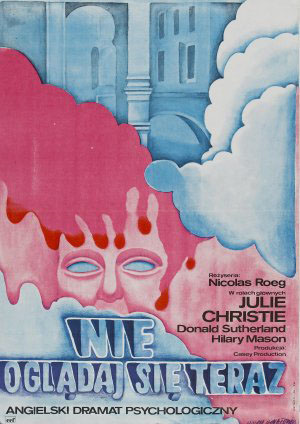“With the loss of several admired avant-garde filmmakers in the past few years, Free Radicals: A History of Experimental Film arrives as a welcome paean to the unfettered, resourceful creativity of its subject,” writes Nicolas Rapold in the New York Times. “Despite the scope of the title, this friendly, colorful documentary from Pip Chodorov is not the last word on all the shapes, sizes and languages of experimental film, but rather an introduction brightened by a companionable enthusiasm and an apposite sense of community.”
Free Radicals “aspires to no less a feat of compression than surveying, in 80 minutes, 10 decades of the filmmaking practice that has variously been described as experimental, nonnarrative, underground, etc.,” writes Nick Pinkerton in the Voice. “Whatever the name, it’s cinema practiced outside the dictates of profit motive, a sacrifice that allows it to be fiercely personal…. Among the many pioneers who braved privation so that future music-video directors could grow rich, Chodorov focuses on Stan Brakhage, Robert Breer, and Len Lye, whose 1958 work of scratched-directly-on-film animation gives Free Radicals its title, and whose delightful early color 1936 short Rainbow Dance plays in full.”
“The narrating Chodorov doesn’t hesitate to insert himself and his work into the historical timeline, but it’s less conceit than a sporting participation with the whimsical, try-anything spirit of his main subjects,” writes Justin Stewart for the L. “Chodorov’s articulate father Stephan, a legitimate expert on the subject and a writer and producer of documentary television, offers insight into the importance of Stan Vanderbeek, and most of the clips we see of pioneer Hans Richter are from a portrait of the artist Stephan produced in 1973. Pip Chodorov admits the truth that ‘experimental film is as old as film itself,’ but he picks as his starting point the work of Richter and fellow German Viking Eggeling, and other European filmmakers who emigrated to America and sought to ‘destroy’ film as an outlet for interbellum malaise and anger.”
At Cinespect, Nathan Rogers-Hancock is a bit ticked that Free Radicals “does not even manage to mention such essential figures as Hollis Frampton, Bruce Conner, Kenneth Anger, Ernie Gehr, Tony Conrad, Jordan Belson, Bruce Baillie, Chick Strand, Marie Menken, Jack Smith, the Kuchar Brothers, James Benning, James Broughton, Owen Land, Christopher MacLaine, or Sidney Peterson. It would be almost staggering to consider this film as an introduction to the experimental film tradition without including any one of these figures, and this documentary is simply too broad and simple-minded to count as anything but the most basic of introductions. More problematically, Chodorov distorts and misrepresents the figures he does include.” Chodorov, he argues, “create[s] a troublesome, distorting lens that has the potential to affect the understanding of anyone unlucky enough to be introduced to these films this way. God only knows how long it might be until another such history finds funding.”
Also in New York, starting tonight, 92YTribeca and MUBI present Bastards of Hitch, “six of our favorite movies influenced by the Master of Suspense (all on 35mm film).” Programmer Ben Semington introduces the series: “Jonathan Demme’s early exercise in paranoia amidst a world of double-crossing special agents [Last Embrace, 1979, recommended by Glenn Heath Jr. in the L]; Richard Attenborough’s distorted reimagining of Psycho with a terrifying ventriloquist’s dummy sitting in for Norman Bates’s mother [Magic, 1978[; Saul Bass’s sole directorial outing about a killer swarm (ants, not birds) [Phase IV, 1974]; an eminently elegant and dryly sardonic neo-noir mindgame from David Fincher [The Game, 1997]; Nicolas Roeg’s own take on a story by frequent Hitchcock inspiration Daphne du Maurier [Don’t Look Now, 1973]; and a mid-career classic of voyeurism and murder from the most devoted heir to Hitchcock of them all, Brian De Palma [Dressed to Kill, 1980].”
“DocuWeeks‘ mission is simply to bring American audiences the best international documentaries—and to program films that, collectively, take the world’s political pulse.” Ernest Hardy in the Voice: “This year, the no-dud lineup covers the water crisis in Haiti, the U.S. government’s ongoing mistreatment of the Native population, and a host of other global and national concerns.” Through August 23.
The original uncut version of Lucio Fulci’s The House by the Cemetery (1981) screens tonight at midnight at the Film Society of Lincoln Center. Charles Stockdale: “At his best, Fulci quite artistically creates a growing sense of dread that eventually explodes in shocking bouts of gory violence, revealing a dedication to both style and genre [that] sets him apart from the legions of lesser purveyors of ick.”
In other news. “Film London and Channel 4 in association with the Whitechapel Gallery are delighted to announce the 10 artists shortlisted for this year’s prestigious Jarman Award.” And they are: Marcus Coates, Shezad Dawood, Benedict Drew, Nathaniel Mellors, Karen Mirza & Brad Butler, James Richards, Ben Rivers, Aura Satz, Matt Stokes, and Jon Thomson & Alison Craighead.
“Spike Lee will be awarded the Jaeger-LeCoultre Glory to the Filmmaker Award at the Venice Film Festival,” reports Variety‘s Nick Vivarelli.
Richard Harland Smith introduces a week dedicated to Toshiro Mifune at Movie Morlocks.
For news and tips throughout the day every day, follow @KeyframeDaily on Twitter and/or the RSS feed. Get Keyframe Daily in your inbox by signing in at fandor.com/daily.




